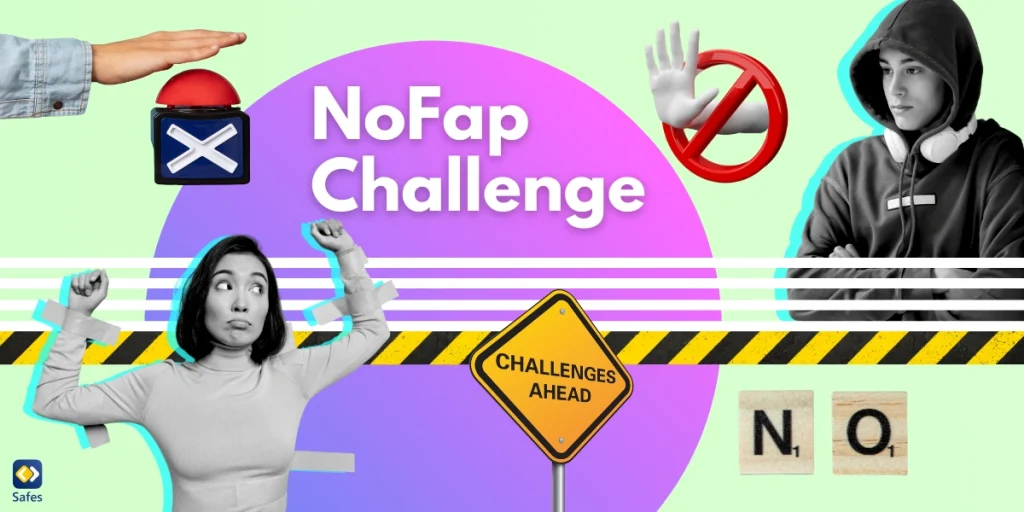In the digital age, where the internet connects people in unimaginable ways, there is a murky undercurrent that often goes unaddressed: the dark side of sending nudes. As children grow up and begin exploring their identities and relationships, they may be tempted to participate in this intimate form of self-expression. But what may seem like a harmless flirtation can quickly turn into a life-altering nightmare, damaging a young person’s digital identity and mental well-being. This is why it is so crucial for parents to confront this sensitive issue head-on and provide guidance to protect their children from the potentially devastating consequences of sharing explicit images. Join us as we dive deep into the world of sending nudes, shedding light on its dangers and offering valuable advice on how you can protect your child.
Download and Start Your Free Trial of the Safes Parental Control App
Understanding the Risks of Sending Nudes Online
The seemingly innocuous act of a teenage daughter sending inappropriate pictures can have ripple effects, transforming into a whirlpool of consequences that may engulf her future. When we ask ourselves, “what happens if a child sends inappropriate pictures?” the answer is a complex web of digital identity, privacy, and reputation concerns that can leave long-lasting imprints on their lives. As parents, it’s crucial to be aware of these implications and navigate these murky waters with our children, ensuring their safety in the boundless online world.

Warning Signs that Your Kid Is Sending Nudes
Beware of these cues your child might be engaging in sending or receiving explicit images online:
- Watch out for hasty phone-snatching and sudden secrecy when you’re around.
- Are they constantly chatting with unknown virtual pals? A red flag for you to fathom.
- Unfamiliar apps lurking in their device might be hideouts for risqué rendezvous.
- Late-night gadget gazing could be a sign of discreet digital dalliances.
- Are they snapping an unusual number of self-portraits, especially in private spaces?
- Unexplained emotional rollercoasters might indicate trouble in their digital domain.
- Hushed tones and coded language could be a sign of sharing explicit secrets.
Open Communication and Education Is the Key
To protect our children from sending nudes or protect them from the consequences if they already have engaged in such activities, open and honest communication matters most. First and foremost, you should encourage your child to share their concerns about the sensitive act of sharing nudes.
The best way how to get your teenager to stop sending nudes is to talk to them about the labyrinth of risks, consequences, and legal implications of sending nudes. Paint vivid pictures of the enduring shadows a single photo might cast on their digital footprint, the unseen dangers to privacy, and the whispers of reputational harm.
Children would be more cooperative if they understood your worries and the consequences that may impact them. However, there are other steps you need to take to guarantee your child’s safety and wellbeing which we’ll discuss in the following.
Setting Boundaries and Rules
To counter this unseen menace of teens sending nudes, it is vital for you to establish clear boundaries, rules, and expectations, cultivating a garden of trust where conversations about explicit content can blossom. By nurturing an open atmosphere, parents can help their teens understand the risks and consequences of such digital dalliances.
The recipe for success in protecting children online lies in fostering healthy digital behaviors, encouraging responsible online choices, and inspiring a sense of digital citizenship. From cocoon to butterfly, watch as your teen’s online presence metamorphoses into one that is accountable, respectful, and secure. And for that goal setting boundaries and rules is crucial.

The Role of Parental Control Apps in Setting Boundaries and Rules
Of course, you cannot follow your child around everywhere, especially when they become teenagers, to see if they’re on the right track. But thanks to technology you can still protect them everywhere they are, even when they’re online. In other words, technology is both the poison and the remedy.
With the ability to monitor screen time, filter out inappropriate content, and track virtual footprints, parental control apps serve as a valuable tool that can both help you have peace of mind that your child is protected, as when as making the job of parenting much easier for you.
If you’re looking for a comprehensive and easy to use parental control app, Safes might be the best option for you.
How Can Safes Protect Your Child?
Safes is a parental control app which requires no modification after you have installed it on your child’s phone, tablet, or computer. You don’t need to touch your child’s device after the installation since you can receive all reports on your child’s digital activity on your own phone or coputer. So, you’re also respecting your child’s privacy. It works on all devices powered by Android, iOS, Windows, and Mac. That means one app fits all.
With its watchful eye on Snapchat, Instagram, and WhatsApp, Safes ensures that no sneaky, inappropriate content slips past its virtual shield. But wait, there’s more! This digital nanny also prevents curious young minds from downloading age-inappropriate apps, keeping their digital playground safe and sound. Safes offers a free trial, allowing you to experience its protective features firsthand before committing.
Interested in learning more about Safes? Use the resources below:
- Windows parental controls
- Macbook parental controls
- Parental controls on Android
- iPhone parental controls
Promoting Self-Esteem and Empowerment to Fight the Consequences of Sending Nudes
Building a strong sense of self-esteem and self-worth in children is crucial to combat the consequences of cyberbullying and sharing nudes online. A confident child is less likely to succumb to peer pressure and more likely to make informed decisions, thus reducing their vulnerability to online risks.
To foster self-confidence and empowerment, you can:
- Encourage open communication: Create a safe space for children to express their feelings and discuss online experiences without fear of judgment.
- Teach digital literacy: Educate children about the potential dangers of sharing personal information and images online, and the importance of privacy settings.
- Build resilience: Help children develop coping mechanisms for dealing with online negativity and teach them how to report inappropriate content.
- Celebrate individuality: Encourage children to embrace their unique qualities and talents, fostering a healthy self-image.
- Promote empathy and kindness: Teach children the importance of treating others with respect online, and how their actions can impact others’ well-being.

Seeking Professional Help
Sometimes the consequences of sending nudes to your child are so devastating that you need to seek outside help to get your loved one back on track. Seek help if your child shows signs of distress, anxiety, or depression after being involved in sharing explicit content, or if their behavior changes dramatically. This can include withdrawal, aggression, or sudden disinterest in previously enjoyed activities.
Reach out to a school counselor, pediatrician, or a mental health professional with experience in working with children and adolescents. They can provide guidance and recommend appropriate interventions or therapy.
To access counseling or therapy services, consider contacting organizations such as the American Psychological Association (APA), the National Association of School Psychologists (NASP), or your local mental health clinics. Also, online platforms like or Talkspace offer licensed therapists who specialize in various issues, including those related to children and adolescents.
Stopping Children from Sending Nudes: Conclusion
In conclusion, the digital landscape can be a treacherous terrain for the younger generation, with sending nudes being a perilous pitfall. It’s essential for parents to illuminate this shadowy corner of the internet by engaging in open-hearted conversations and cultivating responsible online behavior. Empowering children with self-esteem and self-worth, alongside the protective shield of parental control apps, can help them navigate the online world with confidence and safety. Together, let’s transform the internet into a secure playground where our children can truly thrive.
Your Child’s Online Safety Starts Here
Every parent today needs a solution to manage screen time and keep their child safe online.
Without the right tools, digital risks and excessive screen time can impact children's well-being. Safes helps parents set healthy boundaries, monitor activity, and protect kids from online dangers—all with an easy-to-use app.
Take control of your child’s digital world. Learn more about Safes or download the app to start your free trial today!




